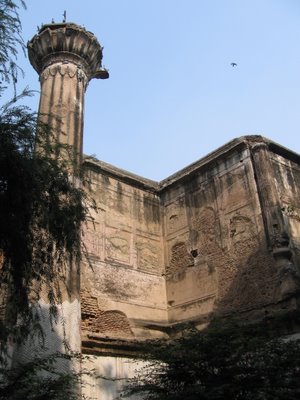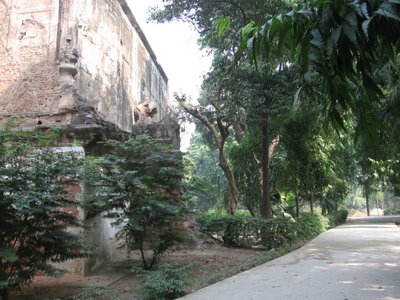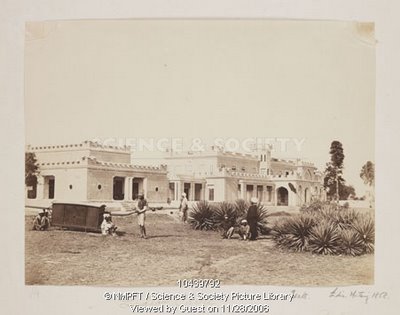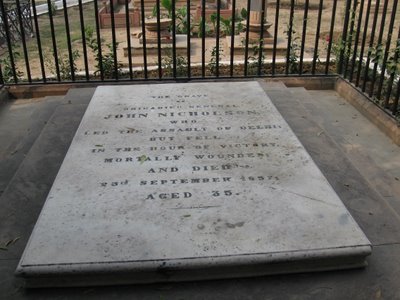Silence...is what I intend to divert my thoughts at. It really never ceases to amaze me how phrases like 'Silence is golden', 'Pin drop silence', and 'Your silence is wonderful', either lose their relevance as soon as we are out of school or they never attain any significance to start with. By and large, after a phase in life, they are seen jailed in 'specialized confinements'....in hospitals, office corridors, libraries and the like. Why does this happen?
I am a strong protagonist of 'Silence', and deeply feel that this virtue needs some respect. My views have obviously been shaped by my limited experience and naturally, they have resulted or formed from my interactions with my relatives, friends’ colleagues, acquaintances and the sundry. Hence the subtle references which I might make in this article are not fictitious...neither incidental : ).
'Day to day conversation’…just how many people we come across everyday appreciate the importance of what they say? A few, I bet! Friends and relatives get together and they enjoy...freak out--they should. They talk sensible and nonsensical things and pour their heart out--they should...after all, thoughts are meant to be shared with near and dear ones. But is it necessary for all the thoughts to find a verbal expression? Is it not the height of hypocrisy to claim that they are a close family or they are close buddies on one hand and say nasty things to each other on the other hand, specially when they know that it might hurt him or her? People claim themselves to be like an open book. They pompously herald that they always speak out whatever is in their hearts and that they do not think twice before 'defining' the other person. The idea, I think, is worth being pooh poohed! It does an irreparable damage to a relation. Thus, it does not deserve a blind application.
‘Griping and gossiping’…’present’ has always been grief stricken; just as past is always better and future always rosy. There are bound to be problems in life…always. Instead of going blah blah blah about them, try saving and perhaps diverting your energies towards solving the matter at hand…introspect in silence. The other day I casually asked a friend how she was and for the next half an hour sat listening to how she actually was…this is taking the question a bit too seriously, don’t you think!
About gossiping…suffice to say that the one who gossips to you would gossip about you: remaining silent is a good option.
It is good to be honest and render an honest opinion about a person. But is it necessary to be crude, sarcastic and rude? No, it is not always necessary. (though 'sometimes' it is). Believe me, every person is hungry of appreciation, admiration, importance and encouragement. Elders opine that being hearty in one's approbation and lavish in one's praise always works wonders. I am not saying that one should resort to sycophancy or flattery. All I intend to say is that if one 'must' render an opinion, one must do it subtly. 'Tactical diplomacy' is not a bad thing you see....neither should it be seen as the weapon of the weak. Great people like Kabir and Kautilya have churned out a whole literature on the importance of 'madhur vachana's'. You may go ahead and smirk at the example...but all I intend to say is that some things/feelings are better left unsaid. If you must express...choose a decent medium appropriate for the occasion. Otherwise, let Silence rule.
You might think of such behavior as a 'formality'. I consider it as an essential part of one's personality. Decency of demeanor is too precious to be abandoned at any stage. Being oneself and letting your hair down amongst friends and relatives is one thing; being frank to the extent of hurting or demeaning the other person is totally different. Observing silence at the right time can make a difference.
Here I must also mention arguments or rather discussions which often erupt between friends, relatives....cousins, elders and so on. While some of them are enjoyable to the end, some enjoyable to a point....and some others not enjoyable at all. The latter types result from peoples inability to stop their verbal flow. They either do not have the common sense to detect when a discussion/argument has gone ugly and indecent, or they obstinately refuse to let go! It must be kept in mind that conversation....especially when it is amongst near and dear ones, is not always about winning a debating point. An argument can never be won. It only gives an illusion of victory.
Again when you are not a part of a discussion....do not butt in. Earth would not stop its movement if you keep mum. Just listen and keep on doing that until you are asked to participate. It is my experience that you will be asked to....'He who speaks less is really heard more'. Your timely silence can enable you to put forth your thoughts more forcefully.
Habitual braggers…these are the people who are so excited about their small and big achievements that they consider it their birthright to keep any body to everybody apprised of their laurels. It is good to share your experiences, your thoughts, your successes but there is a limit to everything. The other person might not say anything for the fear of hurting you. It is for you to have the good sense to stop. Emily Bronte, an author, has said something beautiful in this regard. She says..."If I could, I would always work in silence and obscurity and let my efforts be known by their results".
When I was still in school my 'moral science' teacher told me that God is a friend of silence. I was amazed. "How can she claim that?", I thought. Much later in life, I came across a quote by Mother Teresa. It said...."God is a friend of silence; trees, flowers, grass grow in silence. See how the Stars, the Moon and the Sun-all move in silence" What a profound thought!
No, I am not advocating to the reader to observe a 'maunvrat'. Speech is necessary… freedom of speech is even more important. However, break your silence for something worthwhile. It is a lot better than breaking hearts…it is better than saying a 'hollow' sorry later.
Try giving blah-blah-blah some space to shhhhhhhhhh.
**Coming to the other aspect....there are times when silence is not necessary at all! Like when someone is talking to you, and expects an answer, it is improper to remain silent. It might offend the other person no end. Similarly, silence of people who are good entertainers....people possessing the gift of the gab; is tormenting. One of my friend is a virtual chatterbox. Whenever I get to see him, I wish that he should never stop!


































